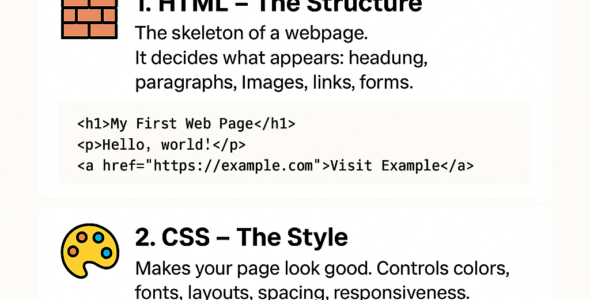Web Performance Optimization with syntax and examples
Web performance optimization is the process of improving the speed and efficiency of web applications. It involves identifying and addressing performance bottlenecks, optimizing code and resources, and ensuring a smooth user experience.
Performance Optimization Techniques
- Minification and Compression:
- Reduce file size by removing unnecessary characters and compressing code
- Use tools like Gzip, Brotli, and UglifyJS
Syntax:
// Minification example with UglifyJS
const uglify = require('uglify-js');
const code = 'function add(a, b) { return a + b; }';
const minified = uglify.minify(code);
console.log(minified.code); // Output: function add(a,b){return a+b}
- Caching:
- Store frequently-used resources in memory or storage
- Use HTTP headers like Cache-Control and ETag
Syntax:
// Caching example with HTTP headers
const express = require('express');
const app = express();
app.get('/image.jpg', (req, res) => {
res.set('Cache-Control', 'max-age=31536000'); // Cache for 1 year
res.sendFile(__dirname + '/image.jpg');
});
- Lazy Loading:
- Defer loading non-essential resources until needed
- Use techniques like dynamic imports and IntersectionObserver
Syntax:
// Lazy loading example with dynamic imports
const loadComponent = () => import('./component.js');
const button = document.getElementById('load-button');
button.addEventListener('click', () => {
loadComponent().then((module) => {
const component = module.default;
document.body.appendChild(component);
});
});
- Code Splitting:
- Divide code into smaller chunks for faster loading
- Use techniques like Webpack's code splitting
Syntax:
// Code splitting example with Webpack
const webpack = require('webpack');
const config = {
// ...
optimization: {
splitChunks: {
chunks: 'all',
minSize: 10000,
minChunks: 1,
maxAsyncRequests: 30,
maxInitialRequests: 30,
enforceSizeThreshold: 50000,
cacheGroups: {
vendor: {
test: /[\\/]node_modules[\\/]/,
name: 'vendor',
chunks: 'all'
}
}
}
}
};
- Image Optimization:
- Compress images without sacrificing quality
- Use tools like ImageOptim and WebP
Syntax:
// Image optimization example with ImageOptim
const imageOptim = require('imageoptim');
const image = 'image.jpg';
imageOptim(image, {
plugins: ['jpegtran', 'optipng', 'svgo']
}).then((optimized) => {
console.log(optimized); // Output: optimized image buffer
});
By mastering web performance optimization techniques, developers can significantly improve the speed and efficiency of their web applications, resulting in a better user experience and increased engagement.
